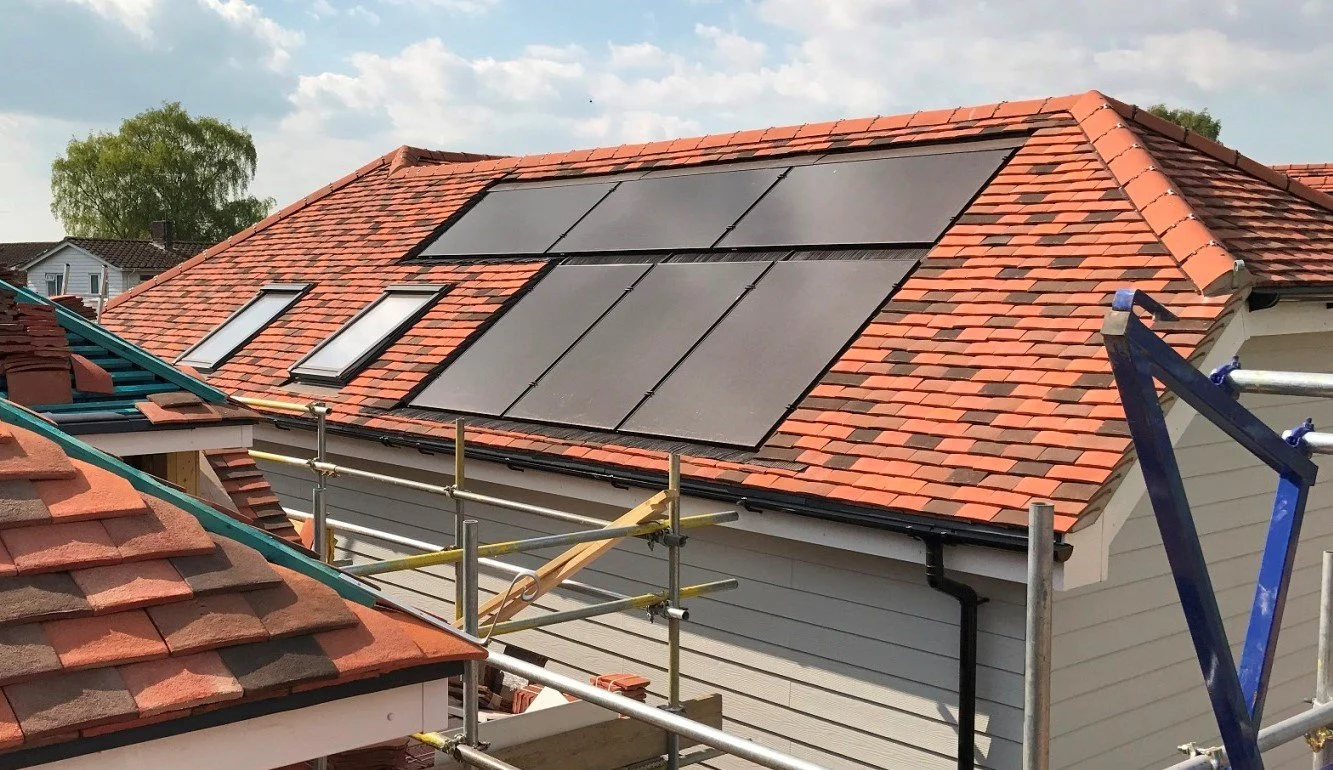Solar technology integration into residential roofing is rapidly gaining momentum. Solar panels and roofing systems offer a compelling solution as more homeowners seek ways to reduce energy costs and lower their environmental impact. Solar roofing has evolved from a niche alternative energy option to a mainstream home construction and renovation feature. We will explore the factors driving this shift, how solar integration benefits homeowners, and the challenges associated with incorporating solar technology into residential roofs.
The Rise of Solar Integration in Residential Roofing
Over the past decade, the adoption of solar panels has surged, fueled by technological advancements, decreasing costs, and increased awareness about environmental sustainability. Traditionally seen as functional surfaces, residential roofs are now being repurposed to generate renewable energy. This shift is not only environmentally beneficial but also financially advantageous in the long run. The growing trend of solar integration in residential roofing reflects a broader societal shift towards sustainable living. As homeowners become more conscious of their energy consumption, they are looking for ways to reduce reliance on the grid. Solar panels offer a sustainable alternative by harnessing the sun’s energy to power homes. Solar integration with energy storage solutions enables homeowners to achieve greater independence from traditional energy sources.
Economic Incentives for Solar Roof Integration
One of the primary drivers behind the adoption of solar-integrated roofing installation by a Roofing contractor is its financial benefits. Governments around the world have introduced various incentives to encourage the installation of solar panels. Tax credits, rebates, and other financial incentives significantly lower the initial cost of installation, making it more accessible to a wider range of homeowners. Additionally, the long-term savings on electricity bills are a major selling point. As energy prices continue rising, a self-sustaining energy source like solar panels becomes increasingly appealing. The ability to generate electricity from a home’s roof reduces or eliminates monthly utility bills, depending on the size of the solar system. Moreover, some homeowners can return excess energy to the grid through net metering, providing an additional income stream. Over time, these savings can offset the initial installation costs, making solar roofing a cost-effective solution.
Environmental Benefits of Solar Roofing
The environmental impact of residential solar roofing is another key factor driving its adoption. As concerns over climate change and environmental degradation increase, homeowners are looking for ways to reduce their carbon footprint. Traditional energy sources, such as coal and natural gas, contribute to greenhouse gas emissions, whereas solar energy is clean and renewable. Homeowners can generate electricity without relying on fossil fuels by integrating solar panels into roofing systems. This reduces their dependence on non-renewable energy sources and contributes to the global effort to combat climate change. Solar panels have a minimal environmental footprint, and as the technology improves, they become even more efficient in converting sunlight into usable energy. Homeowners can take pride in knowing that their homes contribute to a more sustainable future.
Innovations in Solar Roofing Technology
The solar roofing market has seen significant technological advancements in recent years, making it more efficient and aesthetically appealing. Traditional solar panels were often bulky and difficult to integrate into roofing designs, but newer options have addressed these issues. Solar shingles, for instance, are a revolutionary innovation allowing homeowners to install solar panels directly into their roofs without needing external mounting systems. These shingles blend seamlessly with the rest of the roofing material, creating a more aesthetically pleasing appearance. Additionally, solar shingles are highly durable and designed to withstand harsh weather conditions, making them a viable option for various climates. As technology continues to evolve, solar roofing systems are becoming more affordable, durable, and efficient, allowing more homeowners to adopt solar energy solutions without sacrificing the aesthetic integrity of their homes.
Challenges and Considerations in Solar Roof Integration
While the benefits of solar integration in residential roofing are clear, there are also challenges that homeowners and installers must consider. One of the main challenges is the upfront installation cost, which can be higher than traditional roofing systems, even with incentives and rebates. The cost can vary depending on factors such as the size of the roof, the type of solar technology used, and the complexity of the installation process. Additionally, not all homes are suitable for solar integration. Factors such as roof orientation, shading, and the roof’s overall condition must be considered before deciding to install solar panels. Homes with steep or complex roof designs may require more specialized installation, which could drive up costs. For homeowners with older roofs, it may be necessary to replace the roofing system before solar panels can be installed. This adds a layer of expense, although long-term energy savings can mitigate it.
The trend of solar integration in residential roofing is on the rise, driven by economic, environmental, and technological factors. Homeowners are increasingly looking for ways to reduce energy costs and lessen their environmental impact, and solar roofing offers a viable solution. With innovations in solar technology, such as solar shingles, and the availability of government incentives, integrating solar energy into residential roofs has become more accessible than ever. While challenges remain, such as installation costs and roof compatibility, the long-term benefits make solar roofing a promising investment for many homeowners. As technology improves and policies evolve, solar roofs may soon become a standard feature in residential homes worldwide, playing a key role in transitioning to sustainable energy sources.







